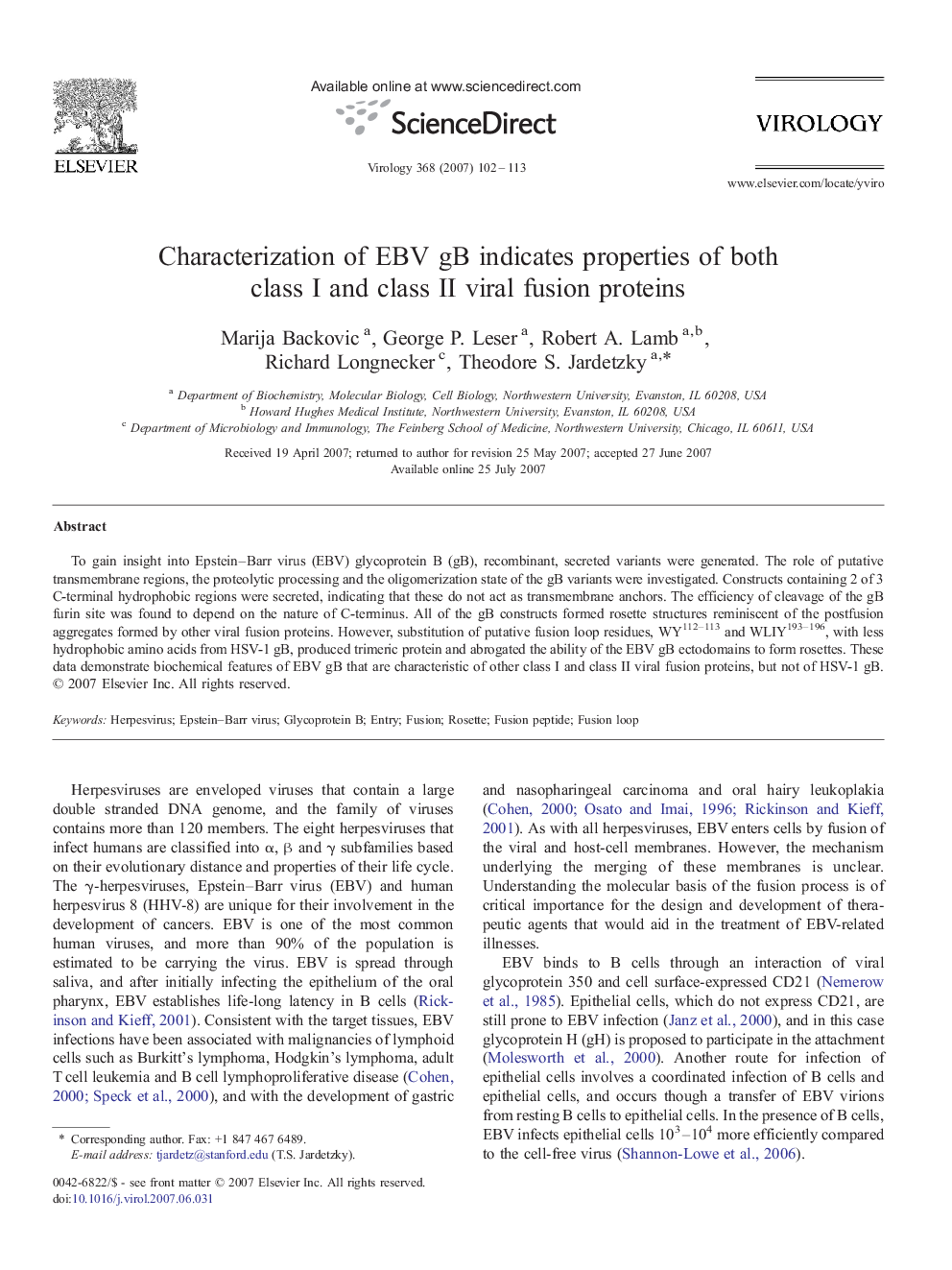| Article ID | Journal | Published Year | Pages | File Type |
|---|---|---|---|---|
| 3426258 | Virology | 2007 | 12 Pages |
To gain insight into Epstein–Barr virus (EBV) glycoprotein B (gB), recombinant, secreted variants were generated. The role of putative transmembrane regions, the proteolytic processing and the oligomerization state of the gB variants were investigated. Constructs containing 2 of 3 C-terminal hydrophobic regions were secreted, indicating that these do not act as transmembrane anchors. The efficiency of cleavage of the gB furin site was found to depend on the nature of C-terminus. All of the gB constructs formed rosette structures reminiscent of the postfusion aggregates formed by other viral fusion proteins. However, substitution of putative fusion loop residues, WY112–113 and WLIY193–196, with less hydrophobic amino acids from HSV-1 gB, produced trimeric protein and abrogated the ability of the EBV gB ectodomains to form rosettes. These data demonstrate biochemical features of EBV gB that are characteristic of other class I and class II viral fusion proteins, but not of HSV-1 gB.
